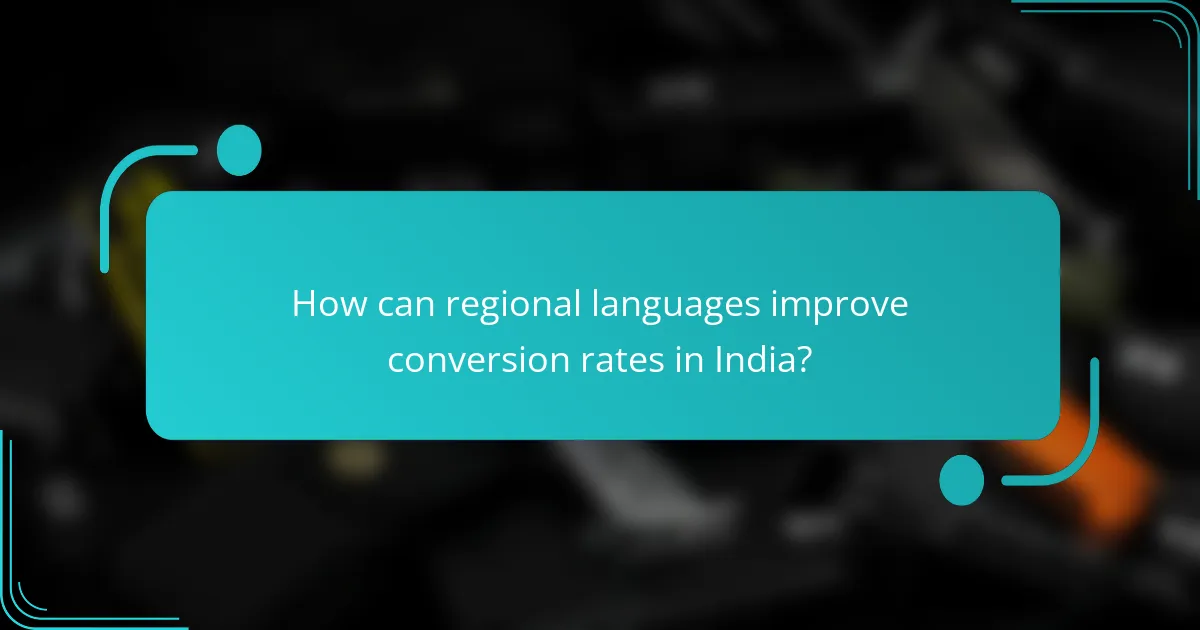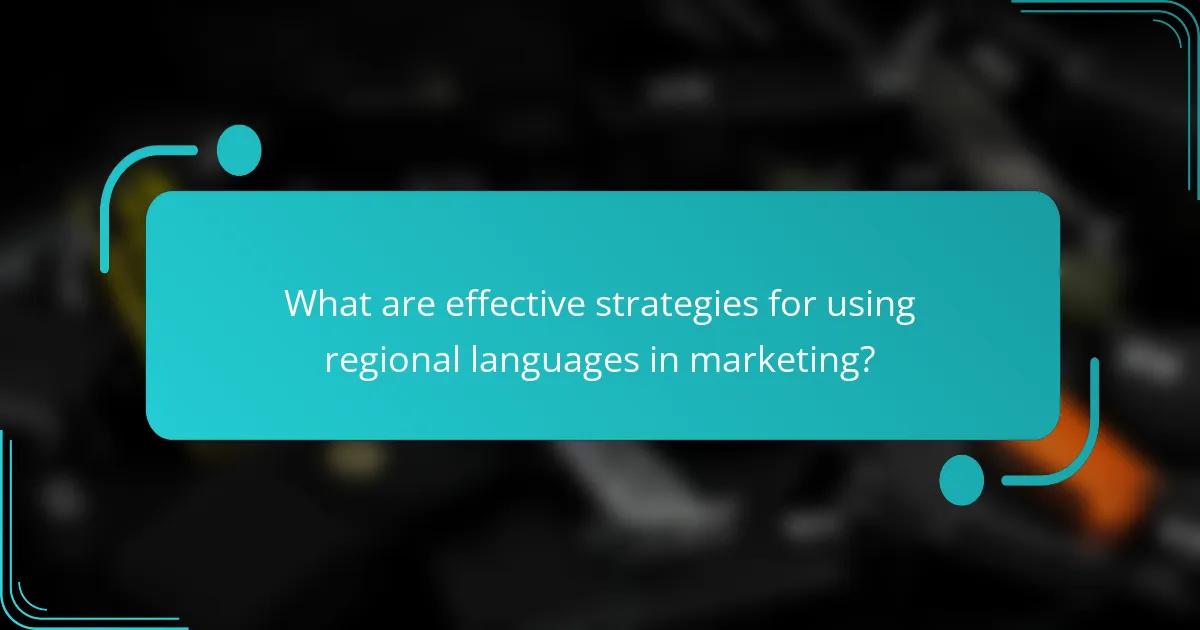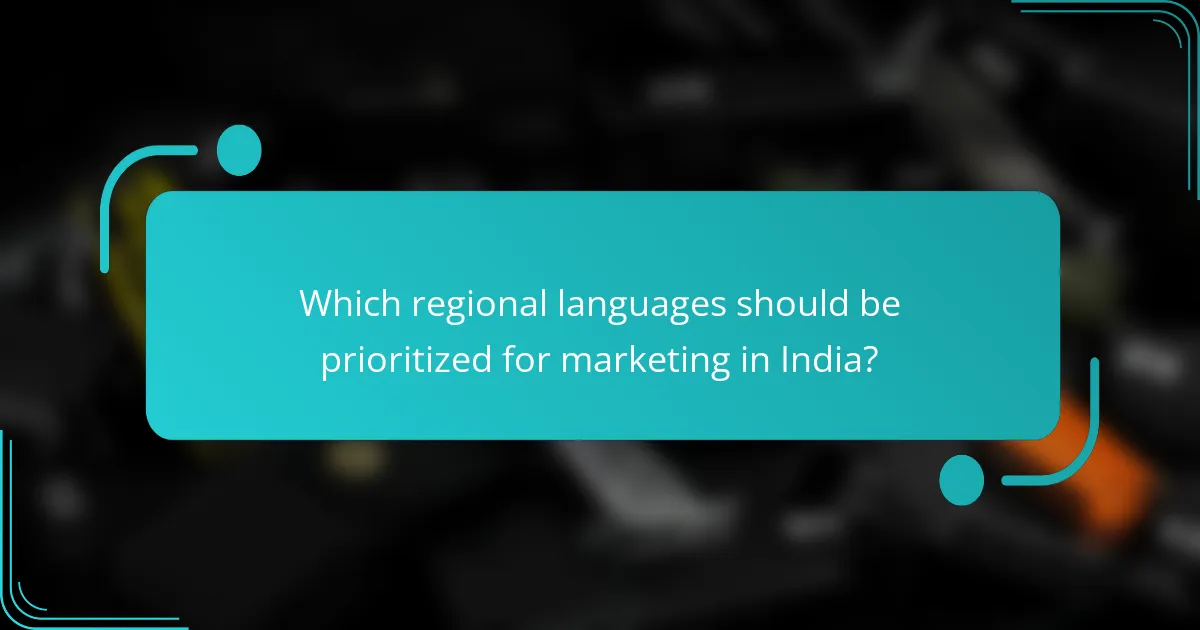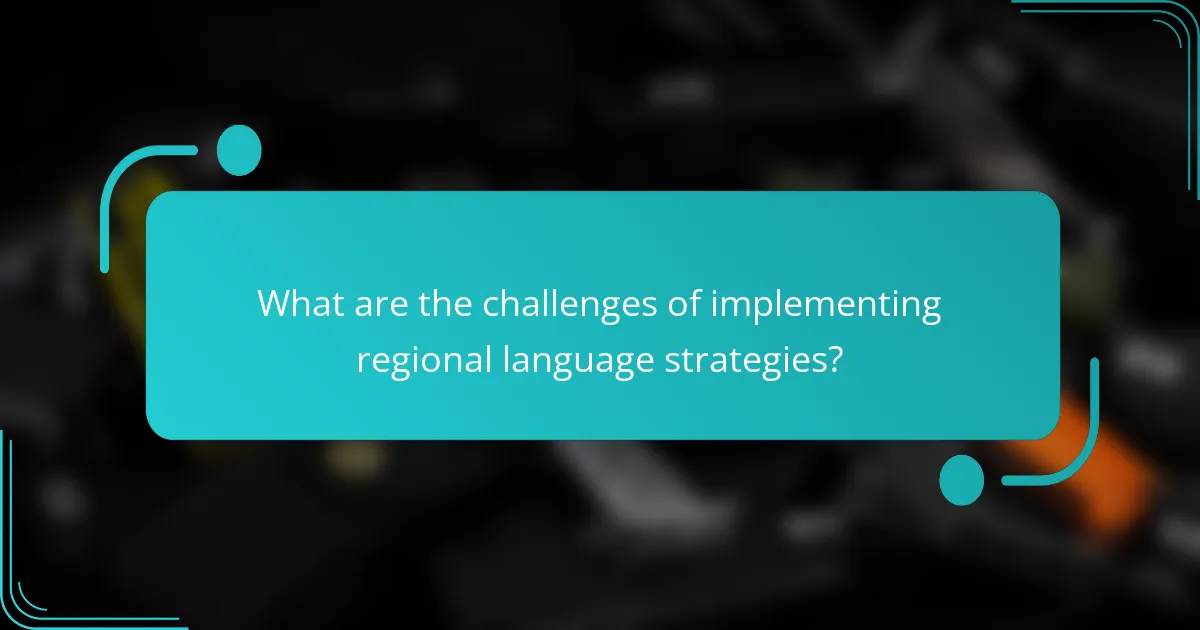Utilizing regional languages can significantly enhance conversion rates in India by making content more relatable and accessible to diverse audiences. When customers engage with brands in their native language, they are more likely to trust the brand and complete purchases, leading to improved marketing effectiveness.

How can regional languages improve conversion rates in India?
Utilizing regional languages can significantly enhance conversion rates in India by making content more relatable and accessible to diverse audiences. When customers engage with brands in their native language, they are more likely to trust the brand and complete purchases.
Increased customer trust
Communicating in regional languages fosters a sense of familiarity and connection, which builds customer trust. When users see content in their native language, they feel that the brand understands their needs and values their culture.
For instance, a brand that offers customer support in Hindi or Tamil is likely to gain a loyal customer base in those regions. This trust can translate into higher sales and repeat business.
Enhanced user experience
Regional languages contribute to a smoother user experience by eliminating language barriers. Users can navigate websites and apps more easily when the content is presented in a language they are comfortable with.
Consider an e-commerce site that provides product descriptions and checkout processes in multiple regional languages. This approach not only simplifies the shopping experience but also reduces the likelihood of cart abandonment, as customers can understand every step of the process.
Higher engagement levels
Engaging customers in their regional languages leads to higher interaction rates with marketing campaigns. Content that resonates culturally and linguistically tends to capture attention more effectively.
For example, social media posts in local dialects can attract more likes, shares, and comments compared to generic English posts. This increased engagement can boost brand visibility and ultimately drive more conversions.

What are effective strategies for using regional languages in marketing?
Effective strategies for using regional languages in marketing include creating localized content, providing multilingual customer support, and running targeted advertising campaigns. These approaches enhance engagement and conversion rates by connecting with diverse audiences in India.
Localized content creation
Localized content creation involves developing marketing materials in regional languages that resonate with specific audiences. This can include website copy, social media posts, and promotional materials tailored to local dialects and cultural nuances.
When creating localized content, consider the preferences and values of the target audience. For instance, using colloquial expressions or culturally relevant references can significantly increase relatability and engagement. It’s essential to ensure that translations are accurate and contextually appropriate.
Multilingual customer support
Multilingual customer support is crucial for addressing the needs of customers who prefer communicating in their regional language. Offering support in multiple languages can improve customer satisfaction and loyalty, as clients feel more comfortable expressing their concerns and inquiries.
To implement effective multilingual support, consider hiring staff fluent in regional languages or utilizing translation services. Providing FAQs and help resources in various languages can also enhance the customer experience and reduce response times.
Targeted advertising campaigns
Targeted advertising campaigns in regional languages can significantly boost engagement and conversion rates. By tailoring ads to specific linguistic and cultural demographics, businesses can reach potential customers more effectively.
Utilize platforms like Google Ads and social media to create language-specific campaigns. Analyze audience data to identify which regions and languages yield the best results, and adjust your strategies accordingly. This approach ensures that your marketing efforts resonate with local audiences, leading to higher conversion rates.

Which regional languages should be prioritized for marketing in India?
In India, prioritizing regional languages like Hindi, Bengali, and Telugu can significantly enhance marketing effectiveness and conversion rates. These languages cater to large populations and resonate more deeply with local audiences, making them essential for targeted campaigns.
Hindi
Hindi is the most widely spoken language in India, with hundreds of millions of speakers. Marketing in Hindi allows brands to connect with a vast audience across northern and central India, where it is predominantly used.
When creating content in Hindi, consider cultural nuances and local dialects to ensure authenticity. For example, using colloquial expressions can enhance relatability and engagement.
Bengali
Bengali is primarily spoken in West Bengal and parts of Assam, with a significant population of speakers. Marketing in Bengali can tap into a culturally rich audience that values local language content.
Utilizing Bengali in campaigns can involve translating key messages and adapting visuals to reflect local traditions. Engaging with regional festivals or events in your marketing can also resonate well with this audience.
Telugu
Telugu is the official language of Andhra Pradesh and Telangana, with a large number of speakers. Marketing in Telugu can effectively reach audiences in these states, where local language content is highly valued.
When crafting Telugu content, focus on clear and simple language that conveys your message effectively. Incorporating local cultural references and themes can further enhance connection and engagement with the audience.

What tools can assist in regional language marketing?
Several tools can significantly enhance regional language marketing efforts in India by facilitating translation and localization. These tools help businesses engage with diverse audiences effectively, ensuring that content resonates culturally and linguistically.
Google Translate
Google Translate is a widely used tool that provides quick translations for numerous languages, including many regional languages in India. While it’s convenient for basic translations, it may lack the nuance needed for marketing content.
For effective use, consider starting with Google Translate for initial drafts, then refine the translations with native speakers or professional services. This approach helps maintain the intended message while ensuring cultural relevance.
Localize
Localize is a powerful platform designed to streamline the translation and localization process for websites and applications. It allows businesses to manage their content in multiple languages easily, making it suitable for regional language marketing.
With features like in-context editing and translation memory, Localize helps maintain consistency across different languages. Businesses should leverage its analytics to track user engagement and optimize content based on regional preferences.
Weglot
Weglot is a translation solution that integrates seamlessly with various content management systems, making it ideal for businesses looking to reach regional audiences. It offers automatic translation with the option for manual edits, ensuring accuracy and cultural sensitivity.
Using Weglot, companies can quickly launch multilingual websites, which is crucial for tapping into India’s diverse market. Regularly update translations based on user feedback to enhance engagement and conversion rates.

What are the challenges of implementing regional language strategies?
Implementing regional language strategies in India presents several challenges, including ensuring translation accuracy, understanding cultural nuances, and effectively allocating resources. Addressing these issues is crucial for enhancing engagement and conversion rates among diverse language speakers.
Translation accuracy
Translation accuracy is vital for conveying the intended message without losing meaning. Inaccurate translations can lead to misunderstandings and damage brand credibility. Employing professional translators familiar with regional dialects can help maintain the integrity of the content.
It’s essential to consider that literal translations often fail to capture the essence of the original message. Using tools like glossaries or style guides can aid translators in maintaining consistency across different languages.
Cultural nuances
Cultural nuances play a significant role in how messages are perceived in different regions. What resonates with one audience may not have the same effect on another. Understanding local customs, traditions, and values is crucial when crafting messages in regional languages.
For example, humor or idiomatic expressions that work in one language may not translate well. Conducting market research or focus groups can provide insights into cultural preferences and sensitivities, ensuring that content is both relevant and respectful.
Resource allocation
Effective resource allocation is necessary for implementing regional language strategies successfully. This includes budgeting for translation services, hiring culturally knowledgeable staff, and investing in technology that supports multilingual content management.
Organizations should assess their target audience’s language demographics to prioritize which languages to focus on. A phased approach, starting with the most widely spoken regional languages, can help manage costs while maximizing impact.

How can businesses measure the impact of regional language marketing?
Businesses can measure the impact of regional language marketing through various metrics such as engagement rates, conversion rates, and customer feedback. By analyzing these factors, companies can assess the effectiveness of their campaigns and make necessary adjustments to improve results.
Key performance indicators (KPIs) to track
To evaluate the success of regional language marketing, focus on key performance indicators (KPIs) like website traffic, bounce rates, and social media engagement. For instance, an increase in website visits from a specific region can indicate effective language targeting.
Additionally, monitor conversion rates, which reflect how many visitors complete desired actions, such as making a purchase or signing up for a newsletter. A higher conversion rate in a regional language segment suggests that the marketing approach resonates well with that audience.
Tools for measurement
Utilize analytics tools like Google Analytics and social media insights to gather data on user behavior and engagement. These platforms can help track how users interact with content in different languages and identify trends over time.
Consider employing A/B testing to compare the performance of regional language content against standard language versions. This method allows businesses to see which approach yields better engagement and conversion rates.
Adjusting strategies based on data
Once data is collected, analyze it to identify areas for improvement. If regional language content shows lower engagement, consider refining the messaging or enhancing cultural relevance. Tailoring content to local preferences can significantly boost effectiveness.
Regularly review and adjust marketing strategies based on performance metrics. This iterative process ensures that businesses remain responsive to their audience’s needs and preferences, ultimately driving better results in regional markets.
